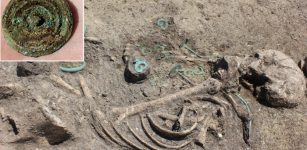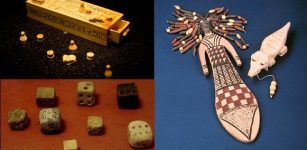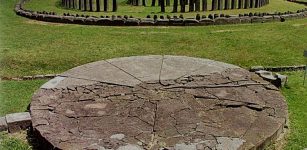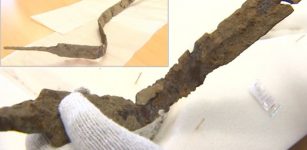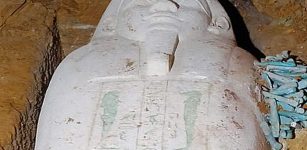World’s Oldest Wine Found In 2,000-Year-Old Roman Tomb In Carmona, Spain
Conny Waters - AncientPages.com - The discovery of a 2,000-year-old Roman tomb in Carmona, Spain, has led to a significant archaeological find. Inside the tomb, the skeletal remains of a man were found immersed in a liquid inside a glass funerary urn, a part of an ancient funerary ritual. This liquid has acquired a reddish hue over time and has been remarkably preserved since the first century A.D.
Bacchus, the Roman god of wine. He was known as Dionysus in ancient Greece. Credit: Adobe Stock - Tony Baggett
In collaboration with the City of Carmona, a team from the Department of Organic Chemistry at the University of Cordoba, led by Professor José Rafael Ruiz Arrebola, has identified this liquid as the oldest wine ever discovered. This discovery surpasses the previously known oldest wine. This Speyer wine bottle was discovered in 1867 and dated to the fourth century AD, preserved in the Historical Museum of Pfalz, Germany.
"At first we were very surprised that liquid was preserved in one of the funerary urns," explains the City of Carmona's municipal archaeologist Juan Manuel Román.
The wine posed an intriguing challenge for researchers. After 2,000 years, the tomb's exceptional conservation conditions allowed the liquid to remain natural, ruling out external factors like floods, leaks, or condensation processes.
To confirm the liquid's identity, the research team conducted a series of chemical analyses at the Central Research Support Service (SCAI) of the University of Cádiz (UCO). They examined its pH, absence of organic matter, mineral salts, and the presence of chemical compounds related to the glass urn or the deceased's bones. Additionally, they compared the liquid to current wines from Montilla-Moriles, Jerez, and Sanlúcar.
The wine in the glass urn. Credit: Juan Manuel Román
The key to identifying the liquid as wine hinged on the presence of polyphenols, biomarkers found in all wines. Using a technique capable of detecting these compounds in very low quantities, the team found seven specific polyphenols also present in wines from Montilla-Moriles, Jerez, and Sanlúcar.
These comprehensive analyses provided compelling evidence that the reddish liquid was indeed an ancient wine, remarkably preserved for over two millennia within the tomb's exceptional conservation conditions.
The absence of syringic acid, a specific polyphenol, helped identify the liquid as white wine, aligning with historical sources on wine production in the region.
While determining the exact origin of the wine remains challenging due to the lack of contemporary samples for comparison, the mineral salts present are consistent with modern white wines from the former province of Betis, particularly the Montilla-Moriles wines.
Significantly, the man's skeletal remains were deliberately immersed in wine, reflecting the cultural norm that wine consumption was a male privilege in ancient Roman society. This gender divide is further exemplified by the presence of two glass urns, one containing the man's remains along with wine, a gold ring, and remnants of the funeral bed, while the other, belonging to the woman, contained amber jewels, a perfume bottle, and fabric remains, potentially silk.
The wine, rings, perfume, and other artifacts found within were part of a trousseau intended to accompany the deceased on their journey to the afterlife. In ancient Rome, as in many other cultures, death held a profound significance, and people sought to be remembered as a means of achieving a form of immortality.
(a), (b) Funeral chamber. (c) Urn in niche 8. (d) Lead case containing the urn. (e) Reddish liquid contained in the urn. Credit: Journal of Archaeological Science: Reports (2024). DOI: 10.1016/j.jasrep.2024.104636
This tomb, a circular mausoleum likely belonging to a wealthy family, was adjacent to a major road connecting Carmo and Hispalis (modern-day Seville). Originally, it was marked by a tower, which has since disappeared over time.
See also: More Archaeology News
After centuries of obscurity, the rediscovery of this tomb and its occupants, Hispana, Senicio, and four others, has not only revived their memory but also shed light on the intricate funerary rituals of ancient Rome. Notably, the liquid found in the glass urn has been identified as the oldest known wine in the world, providing a remarkable glimpse into the past.
This archaeological discovery offers a valuable glimpse into ancient Roman culture's gender-specific funerary rituals and societal norms. It sheds light on the symbolic significance of wine as a male-associated beverage and the distinct treatment of men and women in death rites.
The study was published in the Journal of Archaeological Science: Reports
Written by Conny Waters - AncientPages.com Staff Writer







